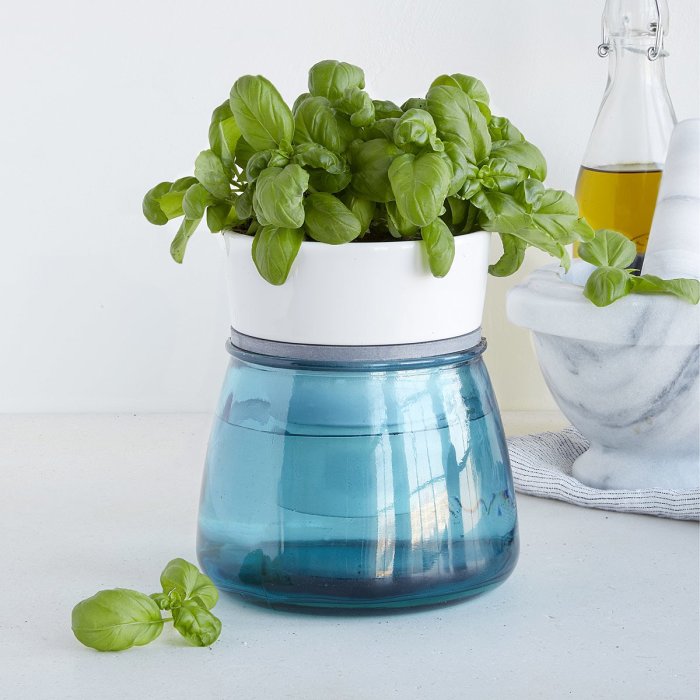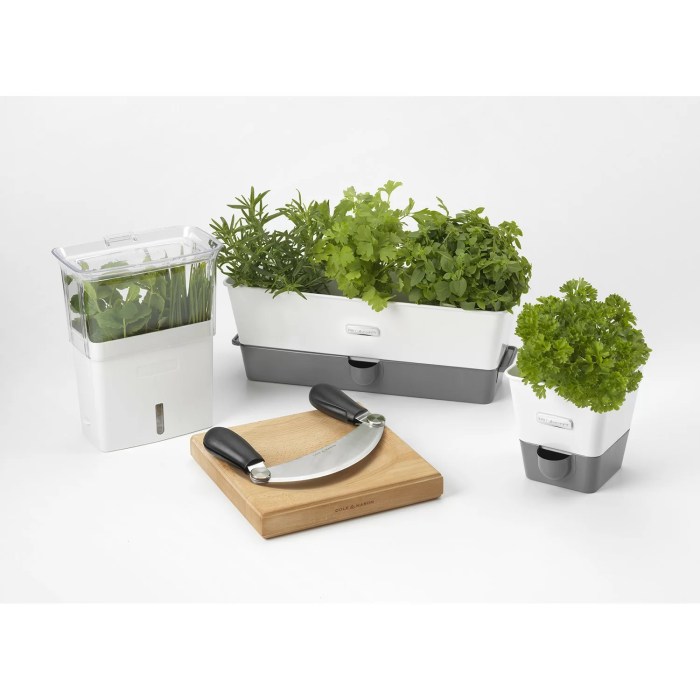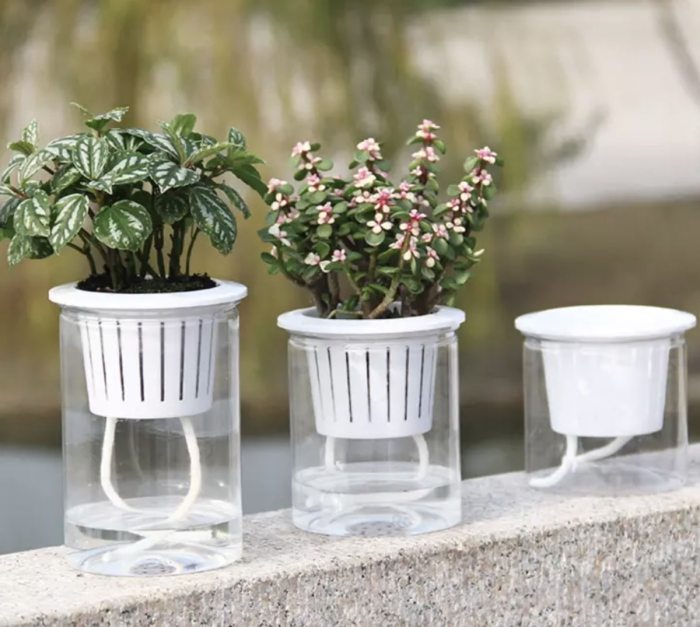Introducing the indoor herb wall planter self watering, an innovative solution for urban gardeners seeking to cultivate fresh herbs effortlessly. These vertical gardens not only enhance the aesthetics of your home but also provide easy access to a variety of herbs for culinary adventures.
With their built-in self-watering systems, these planters simplify maintenance, ensuring optimal hydration for your herbs. Whether you’re a seasoned gardener or a novice, the indoor herb wall planter self watering is the perfect way to bring the freshness of nature indoors.
Indoor Herb Wall Planter Self-Watering Design: Indoor Herb Wall Planter Self Watering

Indoor herb wall planters with self-watering systems have emerged as innovative solutions for urban gardeners seeking to maximize space and enhance their culinary experiences. These planters incorporate ingenious design features that cater to the specific needs of herbs, offering a convenient and efficient way to cultivate fresh herbs indoors.
The vertical design of these planters optimizes space utilization, allowing gardeners to grow a variety of herbs in a compact area. By utilizing vertical space, these planters create a verdant wall of herbs, transforming indoor spaces into lush culinary gardens.
Additionally, vertical gardening promotes improved air quality by increasing the surface area of plants that absorb carbon dioxide and release oxygen.
Self-Watering Mechanisms
Self-watering herb wall planters employ various mechanisms to ensure consistent hydration without the need for frequent manual watering. These systems range from capillary mats and wicks to integrated water reservoirs:
- Capillary Mats:These mats are placed at the base of the planter and draw water from a reservoir below, providing moisture to the plants through capillary action.
- Wicks:Wicks made of absorbent materials, such as nylon or cotton, are inserted into the soil and extend into a water reservoir. Water is wicked up the wick and delivered directly to the plant roots.
- Water Reservoirs:Some planters feature built-in water reservoirs that store water and release it gradually through small holes or tubes, providing a constant source of moisture to the plants.
Herb Selection and Planting Techniques
When selecting herbs for indoor herb wall planters, consider their light requirements, growth habit, and culinary uses. Herbs that thrive in low light conditions include mint, parsley, and chives. For brighter areas, choose herbs like basil, oregano, and thyme. Select herbs with a compact growth habit to maximize space utilization.
Culinary uses should also be considered, as some herbs, such as basil and parsley, are more versatile than others.
To plant herbs in indoor herb wall planters, prepare the soil by mixing equal parts potting mix, compost, and perlite. Fill the planters with the soil mixture and make small holes for each herb. Space the herbs according to their mature size, leaving enough room for growth.
For those who enjoy gardening but have limited space, indoor herb wall planter self watering systems are a great way to grow fresh herbs indoors. These systems are typically mounted on a wall and have several pots or planters that are connected to a water reservoir.
The water reservoir is filled with water and the plants are watered automatically. Indoor herb wall planter self watering systems are a great way to grow herbs for cooking, and they can also be used to grow other plants, such as hanging house plant pots . The self-watering feature makes these systems ideal for people who are away from home for extended periods of time, or who simply don’t have time to water their plants regularly.
Indoor herb wall planter self watering systems are a great way to enjoy fresh herbs and plants indoors.
Plant the herbs at the same depth they were in their original containers. Water the herbs thoroughly after planting.
Maximizing Herb Growth and Yield
To maximize herb growth and yield in the limited space of a wall planter, employ the following techniques:
- Provide adequate light:Place the herb wall planter in a location that receives ample sunlight or use grow lights to supplement natural light.
- Water regularly:Water the herbs when the soil feels slightly dry to the touch. Avoid overwatering, as it can lead to root rot.
- Fertilize regularly:Fertilize the herbs every few weeks with a balanced liquid fertilizer.
- Prune regularly:Prune the herbs to encourage bushy growth and prevent them from becoming leggy.
- Control pests and diseases:Inspect the herbs regularly for pests and diseases. Treat any infestations promptly to prevent damage.
Maintenance and Care
Maintaining indoor herb wall planters is a relatively simple task. Regular watering, fertilizing, and pruning are essential for optimal herb growth. Self-watering systems simplify maintenance by delivering water directly to the roots, reducing the risk of overwatering or underwatering.
Watering, Indoor herb wall planter self watering
Most herbs require consistent moisture, but overwatering can lead to root rot. Self-watering systems provide a steady supply of water, eliminating the need for frequent manual watering. Monitor the water level in the reservoir and refill as needed.
Fertilizing
Herbs benefit from regular fertilization to replenish nutrients in the soil. Use a balanced liquid fertilizer diluted to half strength every few weeks during the growing season.
Indoor herb wall planters with self-watering systems provide convenience and freshness to home gardens. For those seeking a low-maintenance option, fake hanging wall plants indoor offer a realistic alternative that adds a touch of greenery without the hassle of watering.
However, indoor herb wall planters with self-watering features remain a popular choice for those who enjoy cultivating their own herbs.
Pruning
Regular pruning encourages bushy growth and prevents leggy herbs. Pinch back the tips of stems to promote branching and remove any dead or yellowing leaves.
Pests and Diseases
Common pests that may affect indoor herbs include aphids, spider mites, and mealybugs. Inspect plants regularly and treat infestations promptly with insecticidal soap or neem oil. Fungal diseases such as powdery mildew and root rot can also occur. Ensure proper ventilation and avoid overwatering to prevent these issues.
With the rising popularity of indoor gardening, indoor herb wall planter self watering systems offer a convenient and efficient way to grow fresh herbs indoors. These systems utilize vertical space, allowing for a compact and space-saving solution. For those looking to add a touch of greenery to their windows, indoor window plant hangers provide a versatile option to display plants in a visually appealing manner.
By combining the practicality of indoor herb wall planter self watering systems with the aesthetic charm of indoor window plant hangers, homeowners can create a thriving indoor garden that enhances both the ambiance and functionality of their living spaces.
Aesthetic Considerations and Design Ideas
Indoor herb wall planters can seamlessly integrate into diverse home décor styles, enhancing both functionality and aesthetics. Here are some creative ideas to inspire your design:
Modern and Minimalist
- Sleek, geometric planters in neutral colors (white, black, gray) complement modern interiors.
- Vertical arrangements create clean lines and maximize space, while suspended planters add a touch of elegance.
Rustic and Farmhouse
- Natural materials like wood and terracotta evoke a rustic charm.
- Staggered shelves or hanging baskets allow for a more organic and layered display.
Bohemian and Eclectic
- Vibrant colors, intricate patterns, and mixed materials create a bohemian vibe.
- Macrame hangers, woven baskets, and unique planter designs add a touch of whimsy and personality.
DIY Projects and Customization

Building an indoor herb wall planter with a self-watering system can be a rewarding DIY project that adds functionality and greenery to your home. Here’s a comprehensive guide to get you started:
Materials and Tools
Gather the following materials:
- Wooden planks or plywood
- Plastic sheeting
- Self-watering planter inserts
- Screws
- Drill
- Saw
- Measuring tape
- Pencil
- Staple gun
- Soil
- Herbs
Assembly Techniques
- Cut the wooden planks or plywood to the desired size and shape of your herb wall.
- Assemble the frame using screws and a drill.
- Line the frame with plastic sheeting to create a watertight barrier.
- Install the self-watering planter inserts into the frame.
- Fill the inserts with soil and plant your herbs.
- Hang the herb wall on a wall using appropriate hardware.
Customization Ideas
- Paint or stain the wooden frame to match your décor.
- Add decorative elements such as hooks or shelves to hold additional items.
- Use different colored planter inserts to create a visually appealing display.
- Experiment with different herb varieties to create a customized herb garden.
Last Recap

Incorporating an indoor herb wall planter self watering into your home is a wise investment for both your health and culinary creativity. These planters not only provide a convenient source of fresh herbs but also contribute to a healthier indoor environment.
Embrace the convenience and aesthetic appeal of these vertical gardens and enjoy the culinary delights they offer.
FAQ Corner
What are the benefits of using an indoor herb wall planter self watering?
Indoor herb wall planters self watering offer several advantages, including space optimization, improved air quality, simplified maintenance, and easy access to fresh herbs.
What types of herbs are best suited for indoor herb wall planters?
Herbs with moderate light requirements and compact growth habits are ideal for indoor herb wall planters. Some popular choices include basil, parsley, cilantro, mint, and thyme.
How do I maintain an indoor herb wall planter self watering?
Maintaining an indoor herb wall planter self watering is relatively easy. Regular watering, occasional fertilizing, and pruning are essential for optimal herb growth.